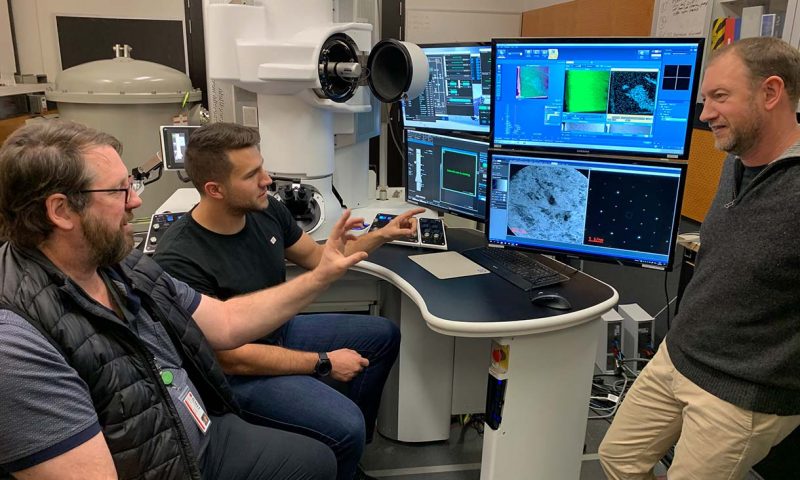Space diamonds
Scientists have found tiny diamonds in meteorites, or rocks from space, before. But now, Australian scientists said this week (September 12, 2022) they’ve confirmed the existence of a rare form of space diamond in four meteorites picked up in North Africa. These diamonds are lonsdaleite. Notably, the ones they found are thinner than a human hair and very hard. What’s more – while earthly diamonds are made deep within Earth, by high temperatures and pressures – scientists think these rare diamonds formed in space. They might be the result of an ancient collision between a dwarf planet – perhaps similar to dwarf planet Pluto – and a giant asteroid.
The space diamonds get their name from a famous British pioneering crystallographer, Kathleen Lonsdale. While regular diamonds have a cubic crystal structure, lonsdaleite, conversely, has a hexagonal crystal structure.
Dougal McCulloch of RMIT University in Melbourne, Australia, took part in the study. He commented:
This study proves categorically that lonsdaleite exists in nature.
The researchers published their results on September 12, in the peer-reviewed journal Proceedings of the National Academy of Sciences.
Thinner than a human hair
The scientists found the lonsdaleite in a rare type of meteorite known as ureilite. And in this case, the lonsdaleite crystals they found are tiny. McCulloch explained:
We have also discovered the largest lonsdaleite crystals known to date that are up to a micron in size … much, much thinner than a human hair.
Andrew Tomkins of Monash University added:
We think that lonsdaleite could be used to make tiny, ultra-hard machine parts if we can develop an industrial process that promotes replacement of pre-shaped graphite parts by lonsdaleite.
The creation of space diamonds
The team used advanced electron microscopy techniques to take snapshots of meteorite slices. In particular, they used them to discover the lonsdaleite and study how it and regular diamonds form in space. McCulloch said:
There’s strong evidence that there’s a newly discovered formation process for the lonsdaleite and regular diamond. It’s like a supercritical chemical vapor deposition process that has taken place in these space rocks, probably in the dwarf planet shortly after a catastrophic collision.
The team thinks the lonsdaleite in the meteorites formed from a supercritical fluid. Wikipedia defines a supercritical fluid as:
Any substance at a temperature and pressure above its critical point, where distinct liquid and gas phases do not exist, but below the pressure required to compress it into a solid.
Existing as a supercritical fluid would almost perfectly preserve the shape and textures of the pre-existing graphite, these scientists said. Tomkins explained:
Later, lonsdaleite was partially replaced by diamond as the environment cooled and the pressure decreased.
Locating lonsdaleite
The scientists believe lonsdaleite began in the mantle of a destroyed inner solar system dwarf planet. The dwarf planet and asteroid that collided to produce these space diamonds are long gone. Scientists only know of a few crater deposits that contain lonsdaleite, including the Barringer (Meteor) Crater in Arizona.
Not all ureilite meteors contain space diamonds, though. The research examined 18 ureilites, largely from northwest Africa. Just four of the samples contained the rare lonsdaleite. It was the discovery of lonsdaleite in local deposits in Tunguska that led researchers to conclude the great explosion there in 1908 was a meteor and not a comet.
From meteors to manufacturing
Alan Salek of RMIT summed up the discovery by telling EarthSky:
This collaborative effort is important for a few key reasons. We have suggested an origin for these ureilite meteorites as well as reporting the largest lonsdaleite crystals found to date, with a newly proposed formation mechanism to suit.
Lonsdale itself is a very interesting material since previous research suggests that it may be up to 58% harder than regular diamond, due to its hexagonal atomic structure.
The hope is that if we could mimic the conditions found in nature that we might be able to grow lonsdaleite crystals in the lab for further research and potentially industrial applications in the future.
Bottom line: Scientists have confirmed the existence of space diamonds known as lonsdaleite. In addition, they said a collision between a dwarf planet and asteroid probably created them.















